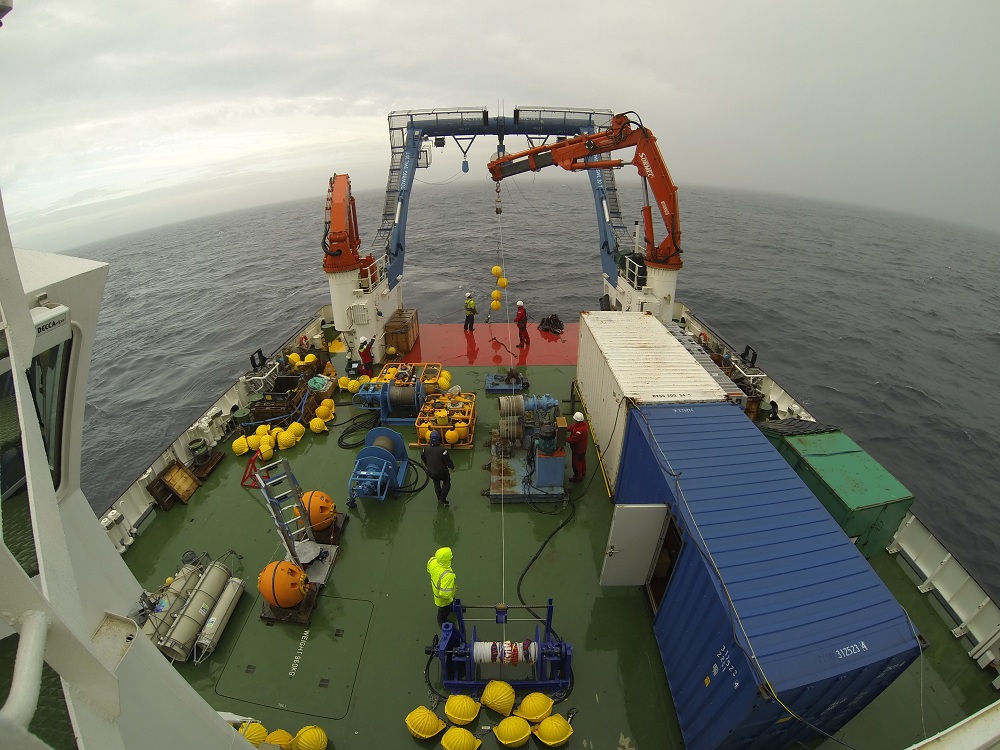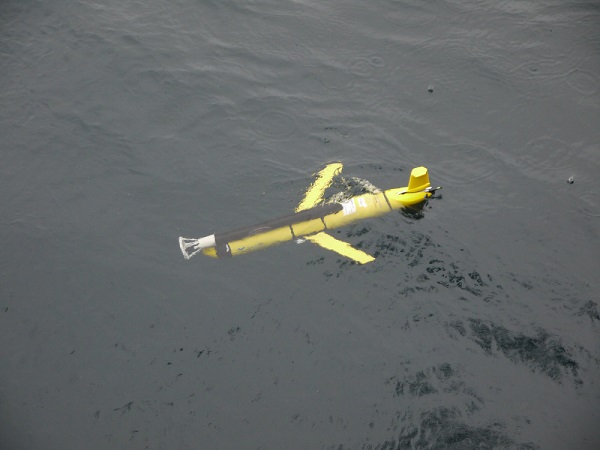Ocean research cruise blog of Jonathan Sharples
We had a very successful day yesterday - managed to get through all that was planned, plus most of what I’d planned for the next day as well. Deploying the moorings began shortly after 0800. This tends to be a long, careful process as the mooring wire is gradually unwound over the stern, instruments are clamped onto it at the planned depths, buoys are slotted in at key stages to hold it all up in the water, and then finally the 500 kg clump of chain is attached and dropped into the sea. By lunchtime we had deployed the long temperature/salt logger mooring and also the bedframe with the current meters. The second current meter mooring has been delayed until today, while the techs sort out an issue with the memory cards that it uses. That allowed us to go and hunt for the wandering wirewalker mooring and also the glider that we deployed when we first got here from Falmouth, but which has refused to dive.
Both the wirewalker and the glider have been sending us regular position information via a satellite link, which meant that finding them and getting them on board was very quick. We arrived back at the mooring site just after sunset, ready to do some more zooplankton work.
It’s a lovely day today - a glorious sunrise (complete with dolphins) and an almost flat sea. However, we’ve just heard that the long-term forecast is looking a little grim. A particularly nasty-looking low pressure system is due this side of the Atlantic next weekend. Forecasts that far out tend to be a little uncertain, but it’s worrying enough for us to think carefully about when we can get back to this site to recover the wirewalker and the 2 gliders that are here.
Original Post



